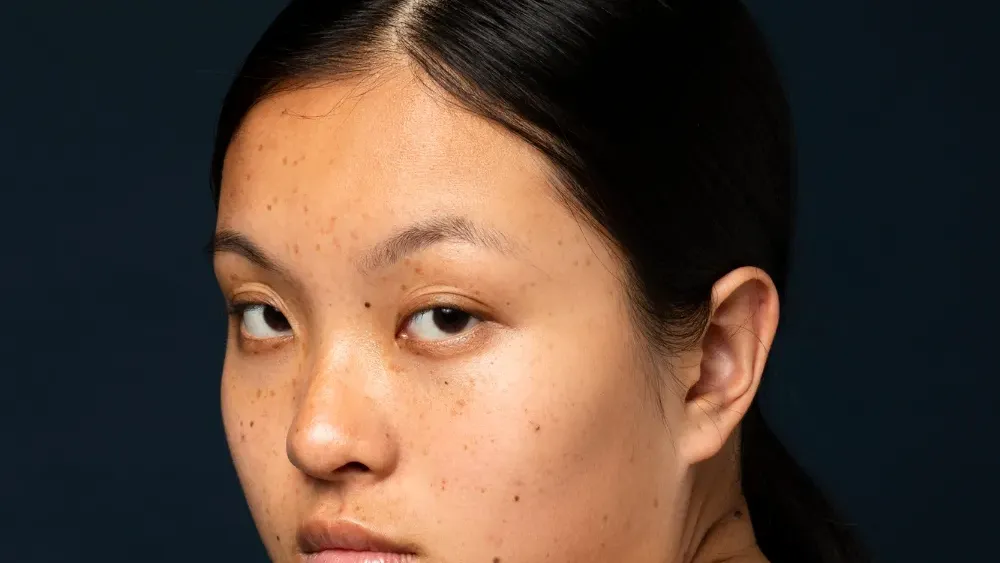Sun Protection Tips for Preventing Melasma and Hyperpigmentation


Melasma and hyperpigmentation are two common skin conditions that can cause dark patches or spots on the skin. These conditions are often triggered or worsened by sun exposure. In this blog post, we will explore the differences between melasma and hyperpigmentation, as well as the importance of sun protection in preventing and managing these skin conditions.
Melasma is a common skin condition that causes brown or gray patches on the face, typically on the cheeks, forehead, nose, and upper lip. It is more common in women, especially during pregnancy or while taking hormonal contraceptives. On the other hand, hyperpigmentation refers to the darkening of certain areas of the skin due to an overproduction of melanin, the pigment responsible for skin color. This can occur in both men and women and can be caused by various factors such as sun exposure, hormonal changes, and skin injuries.
While melasma can affect anyone, it is more common in individuals with darker skin tones, particularly those of Hispanic, Asian, and African descent. Hormonal changes, such as pregnancy or the use of hormonal contraceptives, can increase the risk of developing melasma. Similarly, hyperpigmentation can affect people of all skin tones, but those with darker skin are more prone to developing this condition.
Sun exposure plays a significant role in the development and worsening of melasma and hyperpigmentation. The ultraviolet (UV) rays from the sun stimulate the production of melanin in the skin, leading to darkening of the affected areas. Melasma is often referred to as the "mask of pregnancy" because it commonly occurs in pregnant women due to hormonal changes and increased sensitivity to UV rays.
UV rays can cause various damage to the skin, including premature aging, sunburns, and an increased risk of skin cancer. In the case of melasma and hyperpigmentation, UV rays can exacerbate the dark patches and make them more prominent. It is crucial to protect the skin from these harmful rays to prevent and manage these conditions effectively.
1. Choosing the right SPF and broad-spectrum sunscreen
When selecting a sunscreen, it is important to choose one with a broad-spectrum formula that protects against both UVA and UVB rays. Look for a sunscreen with a sun protection factor (SPF) of at least 30, which blocks 97% of UVB rays. Higher SPF values provide slightly more protection, but there is no sunscreen that can block 100% of UV rays.
2. Proper application techniques and frequency
To ensure adequate protection, apply sunscreen generously to all exposed areas of the skin at least 15 minutes before sun exposure. Reapply every two hours or immediately after swimming or sweating. Don't forget to cover often overlooked areas such as the ears, neck, and hands.
1. The importance of wearing hats, sunglasses, and long-sleeved clothing
In addition to sunscreen, wearing protective clothing is essential for shielding the skin from harmful UV rays. Wide-brimmed hats can provide shade for the face, neck, and shoulders, while sunglasses with UV protection can safeguard the delicate skin around the eyes. Opt for lightweight, long-sleeved clothing made from tightly woven fabrics to minimize sun exposure.
2. Selecting fabrics with UPF (Ultraviolet Protection Factor)
Certain fabrics offer better protection against UV rays. Look for clothing labeled with UPF, which indicates the fabric's ability to block UV radiation. Fabrics with higher UPF ratings provide more effective protection.
When possible, seek shade during the peak sun hours, typically between 10 am and 4 pm. This is when the sun's rays are the strongest and most damaging. If you must be outdoors during these hours, try to stay in shaded areas or use umbrellas and canopies for additional protection.
1. Using antioxidants and topical treatments
Antioxidants, such as vitamin C and E, can help protect the skin from free radicals and reduce the risk of sun damage. Incorporate serums or creams containing these antioxidants into your skincare routine. Additionally, topical treatments containing ingredients like hydroquinone or kojic acid can help lighten dark spots and even out skin tone.
2. Incorporating a healthy diet for skin protection
A well-balanced diet rich in antioxidants, vitamins, and minerals can support overall skin health. Include foods such as fruits, vegetables, nuts, and fish in your diet to provide essential nutrients that promote skin protection and repair.
Managing stress levels and hormonal imbalances
Stress and hormonal imbalances can contribute to the development and worsening of melasma and hyperpigmentation. Practice stress-management techniques such as exercise, meditation, and adequate sleep to help regulate hormonal levels and reduce the risk of these skin conditions.
Avoiding certain medications and cosmetics that may trigger skin conditions
Some medications, such as certain antibiotics and hormone-based drugs, can increase the risk of melasma and hyperpigmentation. Additionally, certain cosmetics and skincare products containing harsh ingredients or fragrances can irritate the skin and worsen these conditions. Be mindful of the products you use and consult with a dermatologist if you notice any adverse effects.
In conclusion, melasma and hyperpigmentation are common skin conditions that can be prevented and managed through proper sun protection. By understanding the causes and risk factors of these conditions, as well as implementing effective sun protection measures, individuals can significantly reduce the risk of developing dark patches or spots on their skin. Remember to choose a broad-spectrum sunscreen, wear protective clothing and accessories, seek shade, and incorporate additional measures like antioxidants and a healthy diet for optimal skin protection. Consistent sun protection is key to maintaining healthy and even-toned skin.
More resources to read:
Understanding the Causes of Pigmentation on Your Face – World of Asaya
Are Hybrid Sunscreens Good for Hyperpigmentation? Everything You Need – World of Asaya